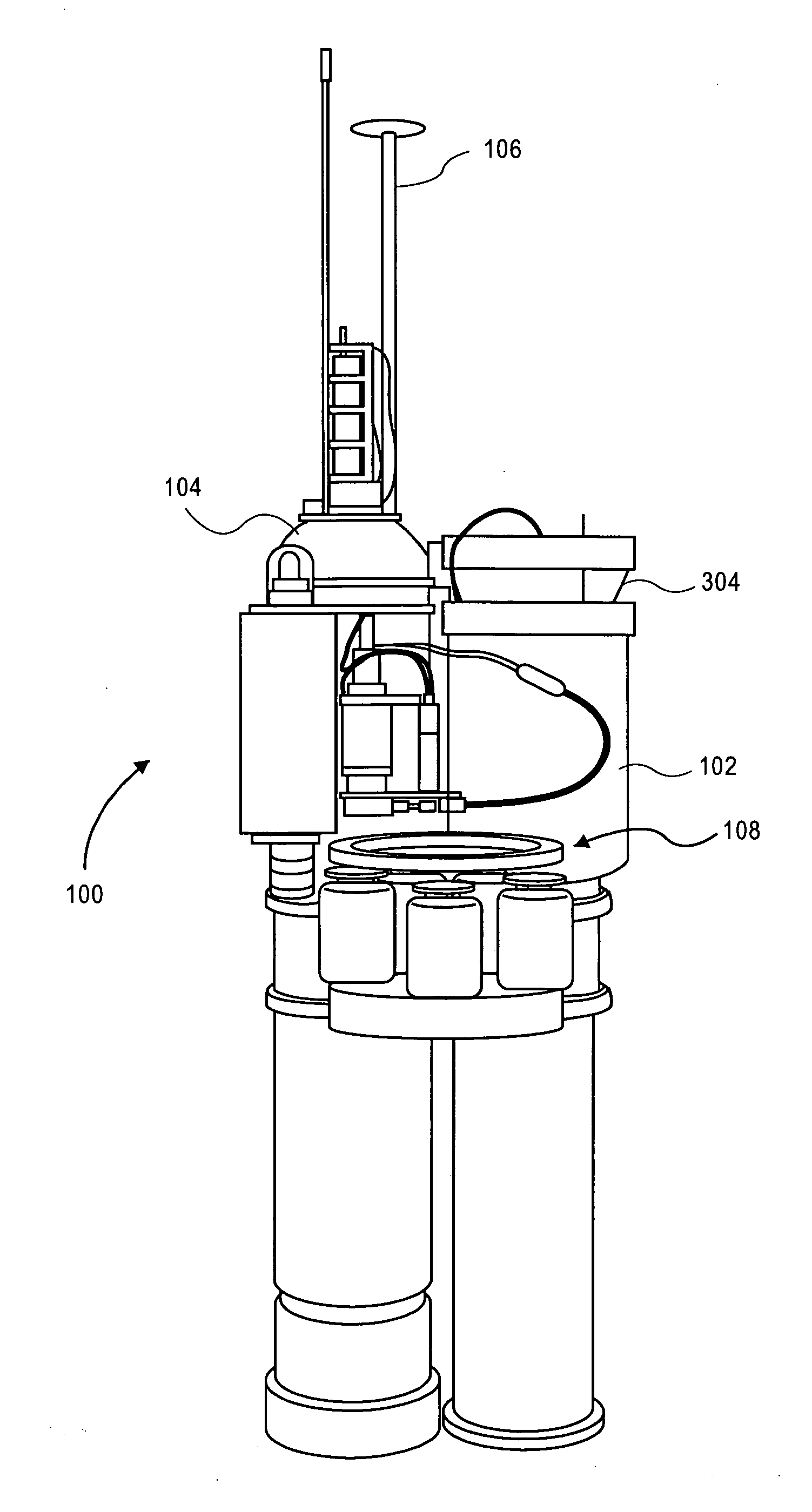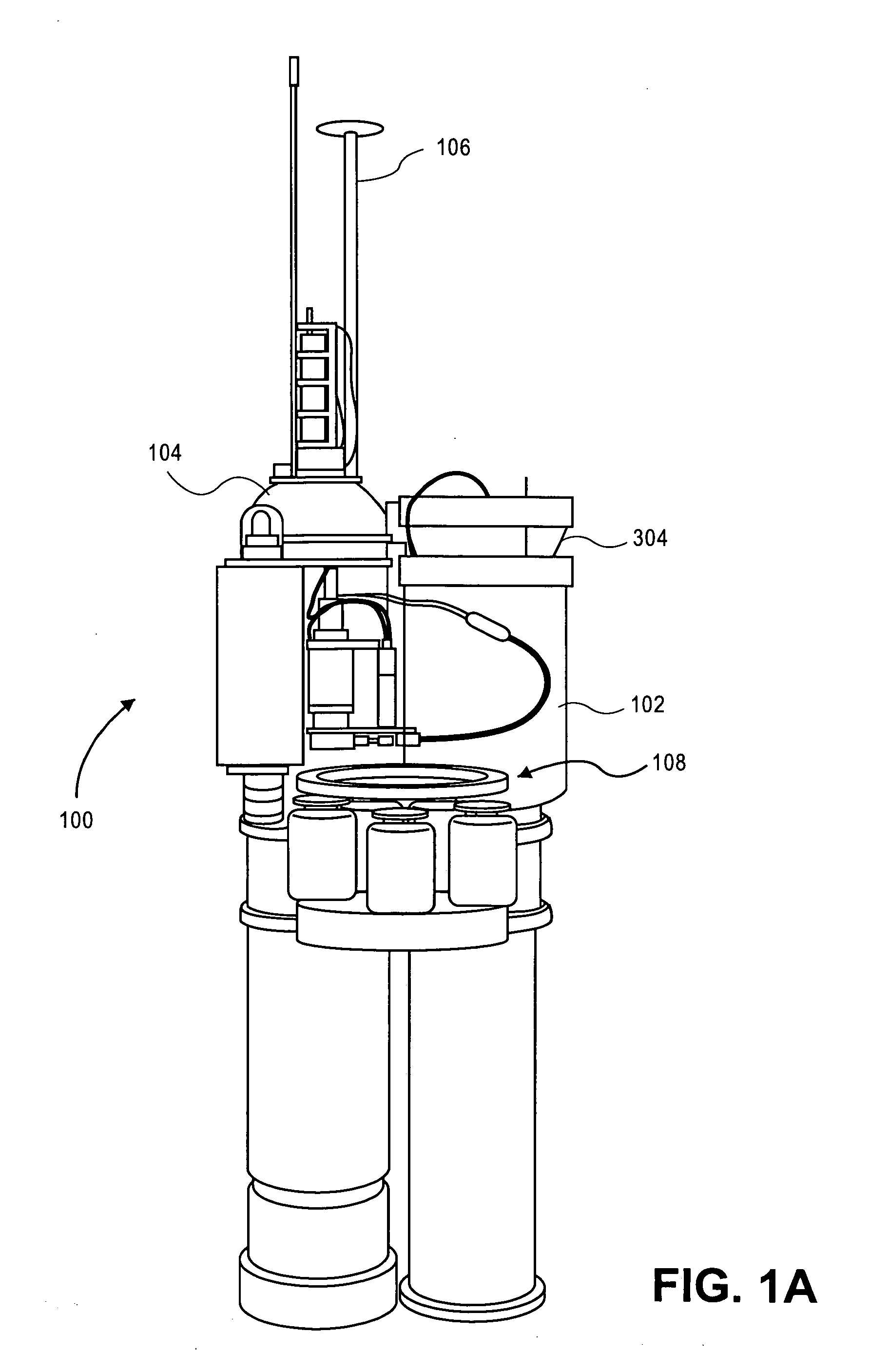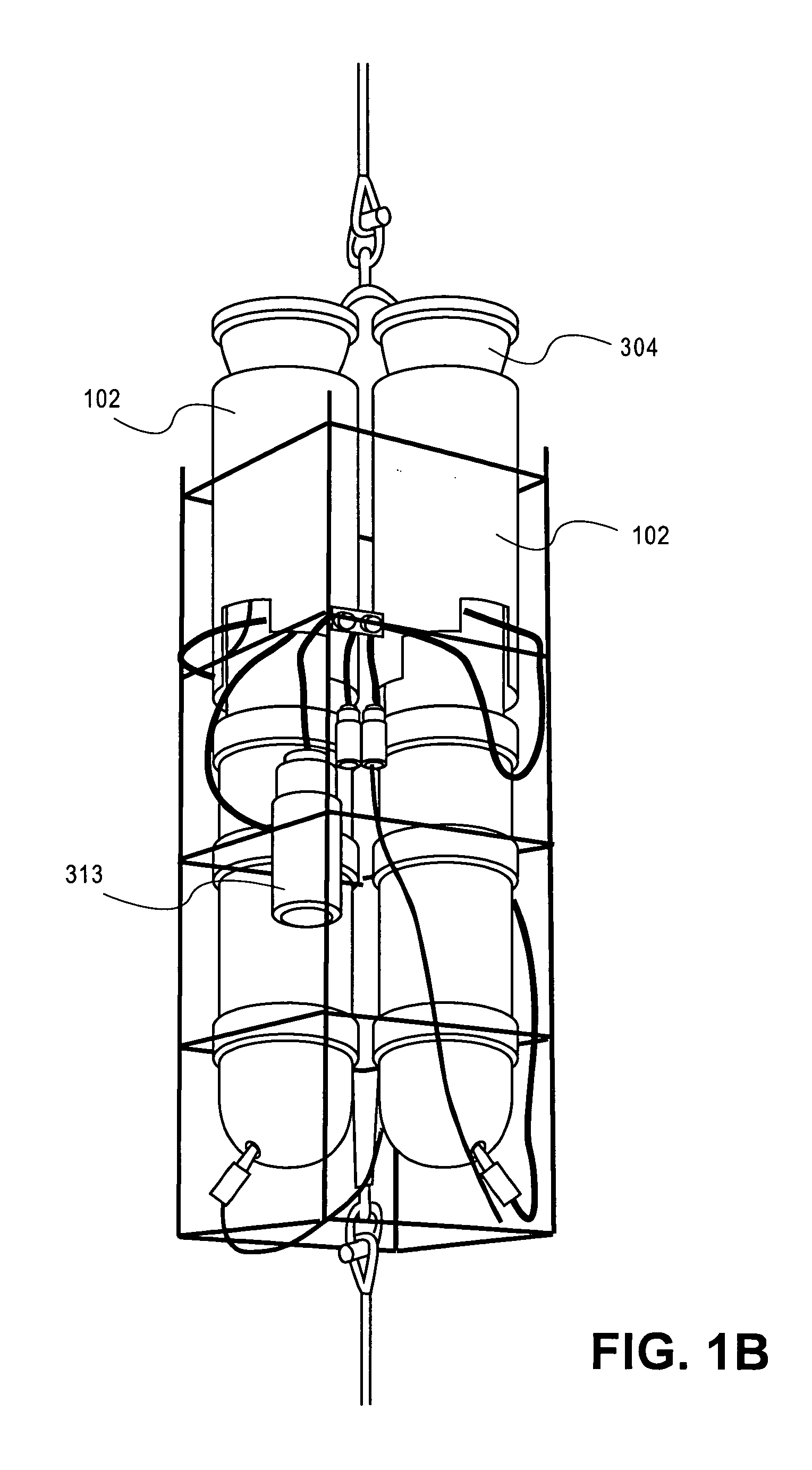Optical sedimentation recorder
a sedimentation recorder and optical technology, applied in the field of optical sedimentation recorders, can solve the problems of affecting the calcification of phytoplankton and zooplankton, the biological and physical processes that sequester carbon remain poorly understood, and the upper kilometers of the ocean are both biologically quite activ
- Summary
- Abstract
- Description
- Claims
- Application Information
AI Technical Summary
Benefits of technology
Problems solved by technology
Method used
Image
Examples
Embodiment Construction
[0031]The various features and advantages of the present invention will become more fully apparent from the following description taken in conjunction with aforementioned drawings.
[0032]With reference now to FIG. 1A, the carbon flux explorer unit of the invention 100 is illustrated, with sampling platform 102 joined to buoyancy engine 104, a profiling float. Batteries (not shown) in both units are used to power the various mechanical devices (such as pumps, etc) illuminator lamps, and electronic components. A transmission cable (also not shown) allows for cross communication of data and computer commands between platform 102 and buoyancy engine 104. A satellite communications unit incorporated into module 104 is designed to uplink to overhead satellites through satellite antenna 106 when the carbon flux explorer is at the ocean's surface.
[0033]Unit 100 is designed to free float once placed in the ocean, and follows the currents in a lagrangian fashion. Because of this relatively ran...
PUM
 Login to View More
Login to View More Abstract
Description
Claims
Application Information
 Login to View More
Login to View More - R&D
- Intellectual Property
- Life Sciences
- Materials
- Tech Scout
- Unparalleled Data Quality
- Higher Quality Content
- 60% Fewer Hallucinations
Browse by: Latest US Patents, China's latest patents, Technical Efficacy Thesaurus, Application Domain, Technology Topic, Popular Technical Reports.
© 2025 PatSnap. All rights reserved.Legal|Privacy policy|Modern Slavery Act Transparency Statement|Sitemap|About US| Contact US: help@patsnap.com



